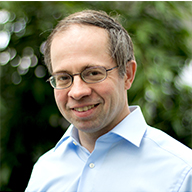02.07.2018
Press Release: Give and Take – How We Recognise Interaction
Tübingen neuroscientists investigate how human interactions are recognised and represented in the brain
Social behaviour relies on interactions with others. How does our brain perceive and process these interactions? Until recently, psychologists and neuroscientists have mainly investigated the neuronal processing of individual actions. A team of neuroscientists of three Tübingen research institutes has now shown that social interactions are represented as pairs of actions of the interacting partners in the human brain. The study, whose results may influence future autism research, will be published in PNAS.
Dancing, shaking hands, playing ballgames – all activities of this kind rely on interconnected action pairs of at least two persons, such as „giving and taking“ or „throwing and catching“. How does the brain process interactions in which the actions of several individuals are interrelated? Do we recognise interactions such as these by correlating the individual partners’ motions on a very basic, perception-based level? Or do we first analyse their actions cognitively and attribute a meaning to them?
A collaborative study of neuroscientists belonging to the Tübingen Max Planck Institute for Biological Cybernetics (MPI BC), the Hertie Institute for Clinical Brain Research (HIH) and the Werner Reichardt Centre for Integrative Neuroscience (CIN) has tackled these questions. The researchers utilised of a virtual reality environment, in which a life-sized three-dimensional animated avatar performed various actions: some clearly recognisable as parts of an action pair, others action mixes in between. The researchers exploited an adaptation effect: unclear stimuli will be differently interpreted based on what stimuli had been in effect earlier. For instance, if probands are repeatedly shown a “giving” gesture and are subsequently confronted with an unclear mix of a “giving” and “throwing”, they will interpret the action mix as “throwing” in the majority of trials.
The researchers were intrigued to not only find this adaptation effect with regard to the first part of a social action sequence, such as “giving”, or “throwing”. The effect also occurred when the matching second part of the sequence was shown first: “taking” or “catching” in these instances. It appears that the very neurons responsible for representing “giving” also respond to its matching opposite “taking”. The action pair “giving-taking” is represented as one unit in the brain. Further control experiments showed that only those actions which are part of a matching pair will trigger the above-mentioned adaptation effect, while completely different actions such as “dancing” will not.
“In the human brain, giving and taking are represented together”, affirms Stephan de la Rosa from the MPI for Biological Cybernetic, who conceived the study and performed the experiments together with Leonid Fedorov (HIH/CIN). “Our results show that there are neurons that very likely respond similarly to both halves of an action pair”, says Fedorov’s supervisor Martin Giese (HIH/CIN). Concerning the impact of their findings, the authors are optimistic: “In many autistic disorders, the perception of social interactions such as those we have investigated here is impaired. We believe that our results may be an important step on the way to a better understanding of these socio-cognitive disorders.”
Organization:
- Max Planck Institute for Biological Cybernetics
- Werner Reichardt Centre for Integrative Neuroscience
- Hertie Institute for Clinical Brain Research
Reseach Group: Computational Sensomotorics
Contact: Prof. Dr. Martin A. Giese

